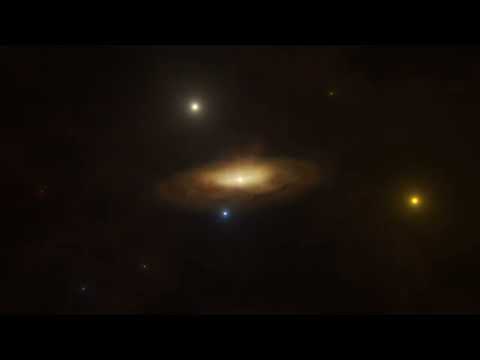Artist’s animation of the black hole at the center of SDSS1335+0728 awakening in real time—a first for astronomers.
In December 2019, astronomers were surprised to observe a long-quiet galaxy, 300 million light-years away, suddenly come alive, emitting ultraviolet, optical, and infrared light into space. Far from quieting down again, by February of this year, the galaxy had begun emitting X-ray light; it is becoming more active. Astronomers think it is most likely an active galactic nucleus (AGN), which gets its energy from supermassive black holes at the galaxy's center and/or from the black hole's spin. That's the conclusion of a new paper accepted for publication in the journal Astronomy and Astrophysics, although the authors acknowledge the possibility that it might also be some kind of rare tidal disruption event (TDE).
The brightening of SDSS1335_0728 in the constellation Virgo, after decades of quietude, was first detected by the Zwicky Transient Facility telescope. Its supermassive black hole is estimated to be about 1 million solar masses. To get a better understanding of what might be going on, the authors combed through archival data and combined that with data from new observations from various instruments, including the X-shooter, part of the Very Large Telescope (VLT) in Chile's Atacama Desert.
There are many reasons why a normally quiet galaxy might suddenly brighten, including supernovae or a TDE, in which part of the shredded star's original mass is ejected violently outward. This, in turn, can form an accretion disk around the black hole that emits powerful X-rays and visible light. But these events don't last nearly five years—usually not more than a few hundred days.
Read 5 remaining paragraphs | Comments
Ars Technica - All contentContinue reading/original-link]




